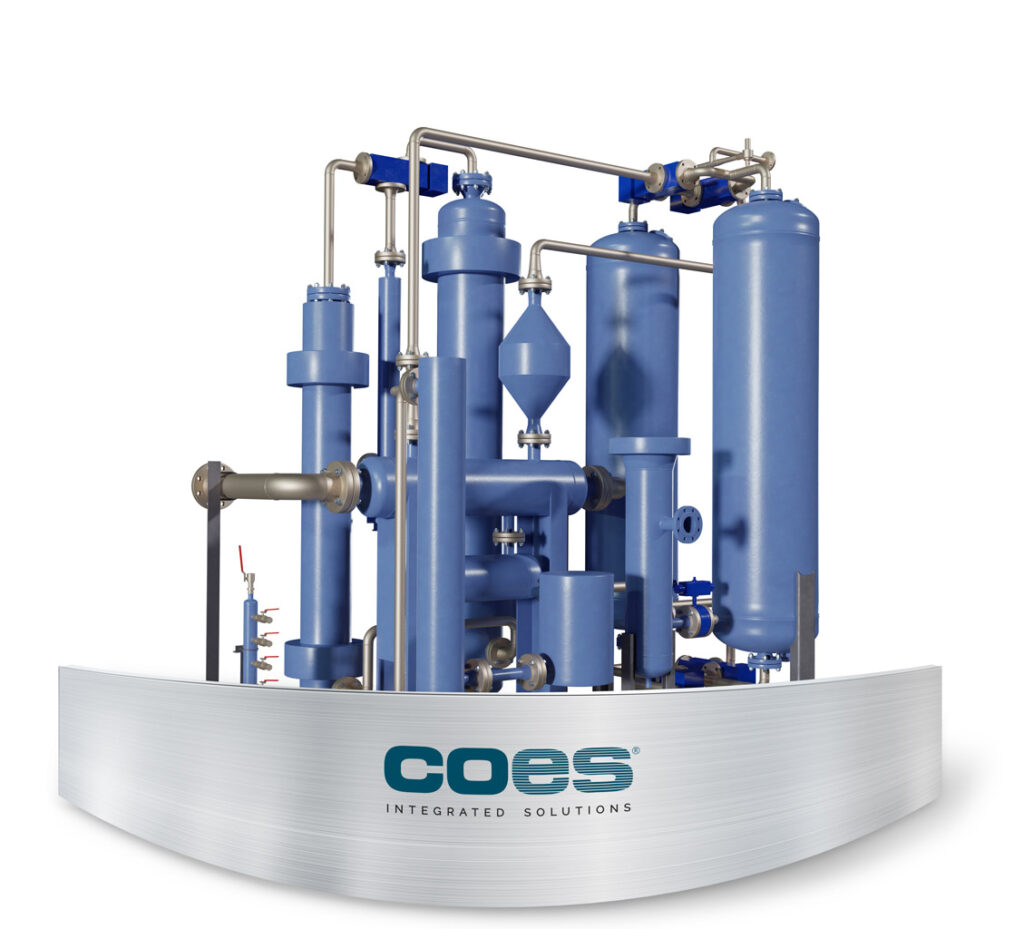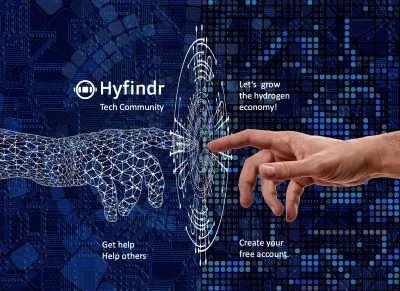Browse hydrogen treatment systems from leading suppliers on our marketplace!
The purification of hydrogen is the process of removing impurities and contaminants from hydrogen gas to produce a pure and high-quality product. Hydrogen gas can be contaminated with a variety of impurities, including water vapour, carbon monoxide, and other gases. The hydrogen purification process involves the use of specialized equipment and techniques to remove these impurities and produce a hydrogen gas that meets the required purity standards.
The specific impurities present in hydrogen gas will depend on the source of the gas and the conditions under which it is produced. For example, hydrogen gas produced from natural gas may contain higher levels of impurities than hydrogen gas produced from water electrolysis.
The quality grade of hydrogen gas can have a significant impact on the performance of fuel cell electric vehicles (FCEVs). Fuel cells require high-purity hydrogen gas to operate efficiently and reliably, and impurities in the hydrogen gas can affect the performance of the fuel cell. For example, impurities such as water vapour and carbon monoxide can interfere with the operation of the fuel cell, while impurities such as oxygen and nitrogen can reduce the efficiency of the system. As a result, fuel cell vehicles typically require hydrogen gas with a high purity grade, such as the ISO 14687 standard mentioned above.
Hydrogen purification methods
The system and process where a hydrogen purifier is integrated will determine the method how to purify hydrogen. Specific applications require the use of dedicated hydrogen purification technologies which include such sophisticated processes as the purification of hydrogen gas by diffusion through a palladium membrane purifier, the catalytic purification of hydrogen, or the purification of hydrogen by pressure swing adsorption.
How is hydrogen purified?
Hydrogen purification can be achieved using several methods depending upon the specific impurities that need to be removed and on the amount of purity levels that are required. Some of the commonly used methods are mentioned below.
- Pressure swing adsorption: Pressure swing adsorption (PSA) is one of the most common method used for purification of hydrogen gas. Hydrogen purification by pressure swing adsorption involves the use of a vessel filled with a material that is selectively adsorptive of certain impurities, such as water vapour or carbon monoxide. As the hydrogen gas flows through the vessel, the impurities are adsorbed onto the material, while the purified hydrogen gas is collected on the other side. PSA hydrogen purification is an industrial process only suited for stationary installations.
- Membrane separation: In membrane separation process, membranes are used for the separation and purification of hydrogen gas. The hydrogen purification membrane is selectively permeable to certain gases, such as hydrogen. As the hydrogen gas flows through the membrane, the impurities are rejected, and the purified hydrogen gas is collected on the other side.
- Electrochemical separation: This process occurs in a palladium hydrogen purifier. The separation process is facilitated electrochemically by taking advantage of the catalytic characteristics of palladium-coated membranes. These palladium membrane hydrogen purifiers are very compact and ideally suited for use in hydrogen mobility solutions.
- Distillation: Distillation is another method used to purify hydrogen gas. It involves the use of a distillation column that separates the impurities from the hydrogen gas based on their boiling points. The purified hydrogen gas is collected at the top of the column, while the impurities are collected at the bottom.
The purity of hydrogen gas can depend on the source of its generation. Hydrogen gas produced from water electrolysis, also known as green hydrogen, is typically of higher purity than hydrogen gas produced from fossil fuels, also known as grey hydrogen. Each of these production processes require different types of hydrogen purifiers. This is because the production of green hydrogen involves the electrolysis of water, which produces hydrogen gas that is relatively free of impurities. In contrast, the production of grey hydrogen involves the steam reforming of fossil fuels, which can produce hydrogen gas that contains higher levels of impurities, such as carbon monoxide and water vapor.

Example: Hydrogen treatment system
Hydrogen purity standards
Hydrogen purity standards are globally recognized standards that specifies the maximum allowable levels of impurities in hydrogen gas and the methods that should be used to test the purity of the hydrogen gas. There are several different types of standard that are used to analyze the purity of hydrogen gas.
- ISO 14687: This is one of the most commonly used international standard that specifies the requirements for hydrogen gas for use in fuel cell vehicles. It specifies the maximum allowable levels of impurities, including water vapour, carbon monoxide, and other gases, as well as the methods that should be used to test the purity of the gas.
- ASTM D4814: This standard, developed by the American Society for Testing and Materials (ASTM), specifies the requirements for hydrogen fuel for use in vehicles. It specifies the maximum allowable levels of impurities and the methods that should be used to test the purity of the gas.
- SAE J2601: This standard, developed by the Society of Automotive Engineers (SAE), specifies the requirements for hydrogen fuel for use in fuel cell vehicles. It specifies the maximum allowable levels of impurities and the methods that should be used to test the purity of the gas.
Methods used for measurement of hydrogen purity
- One of the most common method used to analyze the composition of gases, including hydrogen is gas chromatography. It involves the use of a specialized instrument that separates the gases based on their chemical properties and then measures the concentrations of each gas.
- Mass spectrometry is another method used to analyze the composition of hydrogen gas. It involves the use of a specialized instrument that ionizes the gases and then measures the masses of the ions to determine the composition of the gas.
- Gas analyzers can also be used for measuring the purity of hydrogen. These are sophisticated instruments that uses a variety of techniques, such as infrared absorption or electrochemical sensors, to measure the concentrations of impurities in the gas.
Regulations for hydrogen purity systems
There are various regulations that specify the requirements for hydrogen purity, depending on the specific application and location. Some of these regulations are mentioned below.
- International regulations: There are several international regulations that specify the requirements for hydrogen purity, including the ISO 14687 standard mentioned above.
- National regulations: Many countries have their own national regulations that specify the requirements for hydrogen purity, depending on the specific application. These regulations may be based on international standards or may specify additional requirements.
- Industry regulations: There may also be industry-specific regulations that specify the requirements for hydrogen purity, depending on the specific application. For example, the aerospace industry may have different purity requirements for hydrogen gas than the automotive industry.
Hydrogen purification equipment
There are several different types of equipment’s used to measure the purity of hydrogen, but the selection of the equipment depends upon the method of purification used. Some of the commonly used equipment’s are listed below.
- PSA vessels: In a PSA adsorbent hydrogen purification system, specialized vessels filled with an adsorbent material are used to purify the hydrogen gas. These vessels may be made of stainless steel or other materials and may be designed for different flow rates and impurity levels.
- Membrane separation modules: For the separation and purification of hydrogen, specialized modules containing membranes are used to purify the hydrogen gas. These modules may be made of plastic or other materials and may be designed for different flow rates and impurity levels.
- Distillation columns: For distillation purification, specialized distillation columns are used in the hydrogen gas purifier to separate the impurities from the hydrogen gas. These columns may be made of stainless steel or other materials and may be designed for different flow rates and impurity levels.
Application areas
Hydrogen gas purification is often required for applications where high-purity hydrogen gas is critical, such as fuel cell vehicles, power generation, and industrial processes. In these applications, impurities in the hydrogen gas can affect the performance and reliability of the system. For example, impurities such as water vapour and carbon monoxide can interfere with the operation of fuel cells, while impurities such as oxygen and nitrogen can reduce the efficiency of the system.
Effect of supply chain on hydrogen purity
To maintain a certain level of hydrogen purity throughout the hydrogen supply chain, it is important to implement appropriate purification processes at each stage of the chain. This may involve the use of specialized equipment and techniques to remove impurities and contaminants from the hydrogen gas. In addition, it is important to implement strict quality control measures to ensure that the hydrogen gas meets the required purity standards throughout the supply chain. This may involve the use of tools and methods such as gas chromatography, mass spectrometry, and gas analyzers to assess the purity of the gas at various stages of the supply chain.
Last update: 31.01.2023





